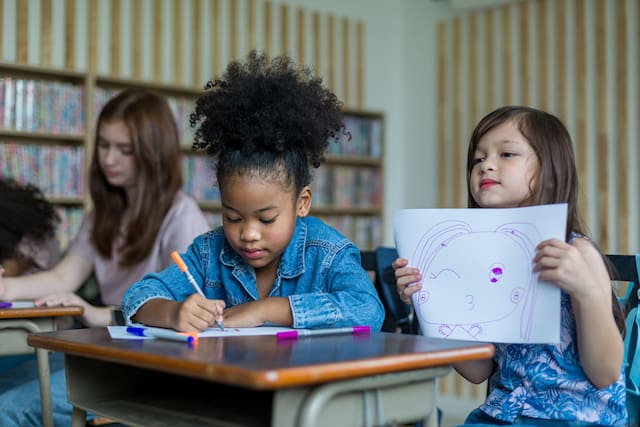A classroom isn’t just a physical place – it’s a hub for learning, growth, and discovery. As a teacher, you’d want to create an environment that inspires and encourages your students to reach their full potential. But with paperwork, supplies, and other classroom materials piling up, it’s easy for even the most dedicated teacher to feel overwhelmed and disorganized.
That’s why having a well-organized classroom is so important. An organized classroom saves you time and reduces stress. Also, it creates a more inviting and productive learning environment for your students. Read about the four tips and tricks to help you stay organized and inspired below.
1. Use Storage Solutions
Storage solutions can be a game-changer in keeping your classroom organized and tidy.
Having a storage solution for your materials and supplies can save time searching for what you need and ensure that everything has a proper place. Also, it can make your classroom look more visually appealing and inviting.
With so many options available, you can choose storage solutions that serve a functional purpose and complement your classroom décor and style. Here are some examples of storage solutions you might consider for your classroom:
- Shelving units: Shelving units or storage rack come in various sizes and materials, such as wood or metal. They can store books, binders, and other materials your students can easily access.
- Storage bins: Storage bins are great for organizing smaller items such as arts and crafts supplies, manipulatives, or even students’ items such as backpacks or lunch boxes.
- Cabinets: Cabinets are ideal for storing items you want to keep out of sight. You can use them to store personal items, confidential documents, or supplies that are not used frequently.
You can purchase the abovementioned storage solutions from companies that deal with primary education supplies and storage solutions. You can go through various websites to find a reputable supplier.
One helpful tip when storing your items is to label each item or container with its contents. This can be especially useful if multiple classes or grade levels share the same storage space. Labeling your classroom materials allows you to quickly and easily find what you need without digging through cluttered drawers or shelves.
2. Use Digital Tools
Incorporating digital tools into your classroom management strategies allows you to streamline your workload, communicate more effectively with your students, and create a more engaging and interactive learning experience.
A wide variety of digital tools are available for classroom organization and management. Some popular examples include apps, websites, and software programs that track student progress, manage lesson plans, and communicate with parents.
When integrating digital tools into your classroom, it’s important to choose tools that are user-friendly and compatible with your existing technology. And you’d want to ensure that your digital devices are age-appropriate and align well with your teaching philosophy and learning objectives.

3. Use Color Coding
Color coding involves assigning a different color to each item category. It helps you to quickly and easily sort and find materials, making it easier to stay organized and efficient.
There are many ways to use color coding in a classroom. For example, you can use different colors to sort books by subject or group supplies by type. Also, you can use it to organize student materials, such as folders or notebooks, by subject or class period.
When using color coding, choosing colors that are easy to distinguish and align with your teaching objectives is essential. For instance, you might choose green for science materials, blue for math materials, or different colors for different grade levels or classes. You can create a key or legend to help you and your students remember what each color represents. You can post this key in a visible location in your classroom or include it in a handout or syllabus.
4. Create Designated Spaces In Your Classroom
Having designated spaces in a classroom can help students feel more comfortable and focused while promoting organization and productivity. When you create different areas for different activities, you can provide your students with various learning environments catering to their needs and preferences.
You can create many different types of designated spaces in your classroom. For example, you might have a reading corner with comfortable seating, a selection of books, or a quiet area where students can work independently without distractions. And you can have a group work area with tables and chairs that can be easily rearranged to accommodate different group sizes and activities.
Conclusion
Organizing your classroom is essential to creating a productive and engaging learning environment for your students. Using the abovementioned tips can promote organization, productivity, and creativity among your students.
Remember to consider the needs and interests of your students to foster a sense of community. Take the time to evaluate your classroom organization and experiment with different strategies to find what works best for you and your students. With a little bit of effort and creativity, you can transform your classroom into a space that is both functional and inspiring.

